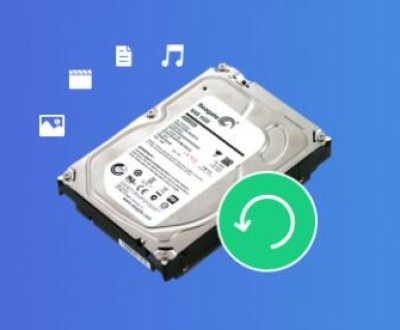Clip Studio Paint (CSP) is a highly versatile tool for creating digital illustrations, animations, and comics. While it’s widely favored for its broad range of tools and user-friendly interface, like any software, users can sometimes experience file loss due to accidental deletions, crashes, or corrupt files. If you’ve spent hours perfecting your artwork only to lose it, don’t panic!
Part 1: Common Causes of File Loss in Clip Studio Paint
Before diving into recovery methods, it’s important to understand the common reasons files get lost in Clip Studio Paint:
Software Crashes: Unexpected crashes can lead to unsaved work or corrupt files.
Accidental Deletion: Sometimes users delete important project files by mistake.
File Corruption: Improper saving, system crashes, or abrupt power failures can cause file corruption.
Overwriting: Overwriting files inadvertently can result in the loss of previous versions.
Auto-Save Issues: While CSP has an auto-save feature, it may not always function correctly due to incorrect settings or technical glitches.

Understanding the cause of your file loss can help determine the best recovery approach.
Part 2: Preventive Measures in Clip Studio Paint
Before delving into recovery techniques, let’s look at some preventive measures to help minimize file loss:
Enable Auto-Save: CSP has an auto-save feature that can save you from losing work during unexpected crashes. To enable auto-save:
Go to File > Preferences > Performance.
Set your preferred Auto-Save Interval.
Save Versions Regularly: When working on large projects, it’s a good idea to save multiple versions using different file names, e.g., “project_v1”, “project_v2”.
Use Cloud Backup: CSP offers cloud integration, so you can automatically sync and back up your files. This ensures that even if your local files are lost or corrupted, you can retrieve them from the cloud.
Go to Clip Studio and log into your account.
Use Cloud settings to adjust backup preferences.
External Backup: Manually back up your projects on external storage devices such as USB drives or external hard disks.
These preventive measures can save you time and stress in case of future file losses.
Part 3: Recovering Unsaved Files in Clip Studio Paint
Clip Studio Paint creates temporary files during your workflow, which can sometimes be recovered if the software crashes or if you forget to save your work. Follow these steps to attempt recovery:
1. Check Auto-Save Location
Clip Studio Paint saves temporary files in a specific folder for recovery purposes. Here’s how to locate it:
Go to This PC or My Computer on your desktop.
Navigate to the following path:
makefile
复制代码
C:\Users\[Your Username]\AppData\Roaming\CELSYSUserData
Look for files with extensions like .clip or .cmc, which correspond to your work. These files may not have the exact name as your project, so check the timestamps to find the most recent ones.
Open the file in Clip Studio Paint and save it with a new name.
2. Recovering from Auto-Save
If Clip Studio Paint crashes, it will often prompt you to restore your work upon reopening. You can check if there is any autosaved version by doing the following:
Reopen Clip Studio Paint.
If prompted with a recovery option, select the file and save it immediately.
Part 4: Recovering Deleted Files from the Recycle Bin
If you accidentally deleted your Clip Studio Paint file, the first place to check is your computer’s Recycle Bin. Follow these steps:
Open the Recycle Bin by double-clicking its icon on your desktop.
Look for your CSP file (it might be in .clip or .psd format).
Right-click the file and choose Restore to return it to its original location.
Go back to the original folder and open your file in CSP.
Part 5: File Recovery from Backup Locations
1. Recover from Cloud Storage
If you use Clip Studio’s cloud feature, recovering files is easy:
Open Clip Studio and log into your account.
Go to Cloud Settings and check for your file.
Download the file back to your local storage and open it in Clip Studio Paint.
Alternatively, if you use external cloud services like Google Drive, Dropbox, or OneDrive, visit those platforms and search for backups of your project.
2. Recovering from an External Backup
If you backed up your files on external storage (e.g., USB drives or external hard disks), connect the device to your computer:
Open File Explorer and navigate to the location of the external storage.
Locate your project file, and copy it to your computer.
Open the file in Clip Studio Paint to resume your work.
Part 6: Using File Recovery Software
Panda Assistant is a leading software solution designed to help users recover lost or deleted files quickly and efficiently. Whether it’s accidental deletion, corrupted files, or formatting errors, Panda Assistant offers an intuitive interface to recover data from various storage devices, including hard drives, SSDs, SD cards, and USB drives.
With powerful recovery algorithms, Panda Assistant ensures that your documents, photos, videos, and other important files can be restored in just a few clicks. The software supports a wide range of file formats and is compatible with both Windows and macOS systems, making it a versatile tool for professionals and casual users alike.
One of Panda Assistant’s standout features is its ability to preview recoverable files before restoration, giving users confidence in selecting the correct files. The software also boasts high-speed recovery, even for large datasets, and offers secure recovery to protect your sensitive data.
Part 7: Dealing with Corrupted Files in Clip Studio Paint
File corruption can occur due to improper saving or sudden power loss. Here are steps to try to recover a corrupted CSP file:
1. Check Previous Versions
Windows has a feature that allows you to restore previous versions of a file. Here’s how to use it:
Right-click on the folder where your CSP file is stored.
Select Properties and go to the Previous Versions tab.
If there’s an earlier version of your file, select it and choose Restore.
2. Repair Using CSP’s Built-in Functions
If Clip Studio Paint detects file corruption, it may attempt to recover part of your file upon opening. Save any progress immediately once the file opens.
Part 8: Final Steps and Tips
1. Keep Your Software Updated
Ensure that you’re running the latest version of Clip Studio Paint. Updates often include bug fixes and stability improvements that can prevent future file losses.
2. Contact Support
If none of the above methods work, contact Clip Studio Paint’s support team for further assistance. They might be able to provide additional recovery solutions specific to your issue.
File loss in Clip Studio Paint can be frustrating, but with the right approach, you can often recover your work. Whether through built-in recovery options, file recovery software, or external backups, these methods give you a solid chance of retrieving your lost or unsaved files. Preventive measures like regular saving, cloud backups, and version control can also help avoid future issues.
Always remember that while digital artwork can be delicate, being proactive with backups and recovery methods will ensure your creations are safe, no matter what happens.
About us and this blog
Panda Assistant is built on the latest data recovery algorithms, ensuring that no file is too damaged, too lost, or too corrupted to be recovered.
Request a free quote
We believe that data recovery shouldn’t be a daunting task. That’s why we’ve designed Panda Assistant to be as easy to use as it is powerful. With a few clicks, you can initiate a scan, preview recoverable files, and restore your data all within a matter of minutes.
Subscribe to our newsletter!
More from our blog
See all postsRecent Posts
- How to save tiktok videos on computer 2025-04-30
- How to watch gopro videos on computer 2025-04-30
- How to save video from blink video doorbell to computer? 2025-04-30

 Try lt Free
Try lt Free Recovery success rate of up to
Recovery success rate of up to









